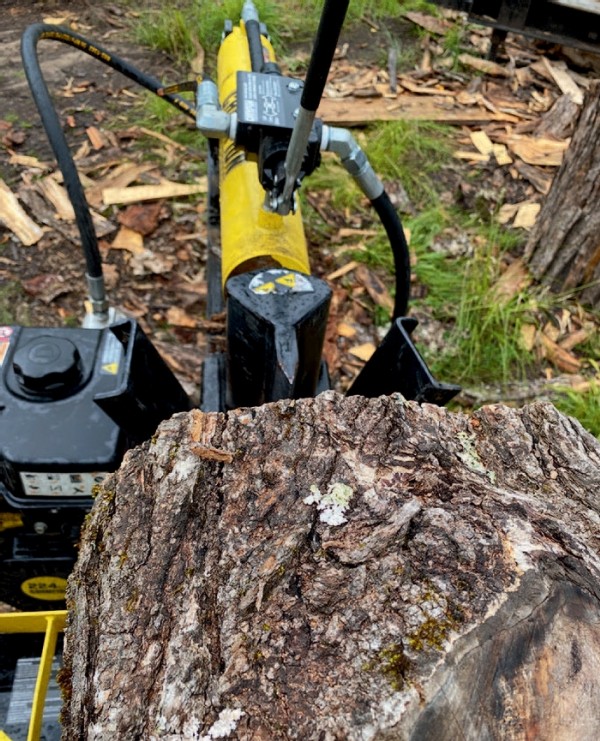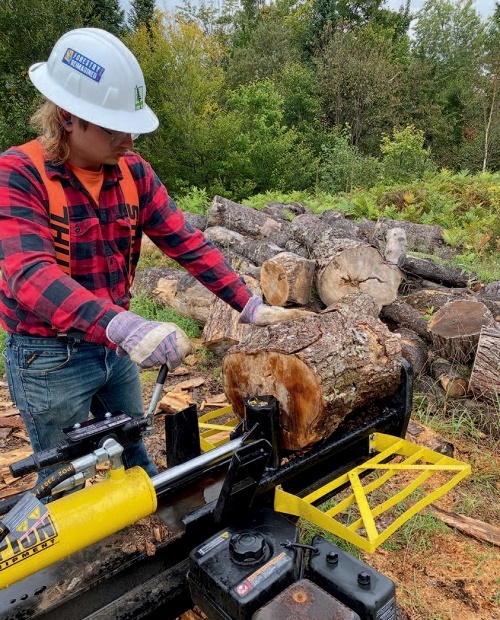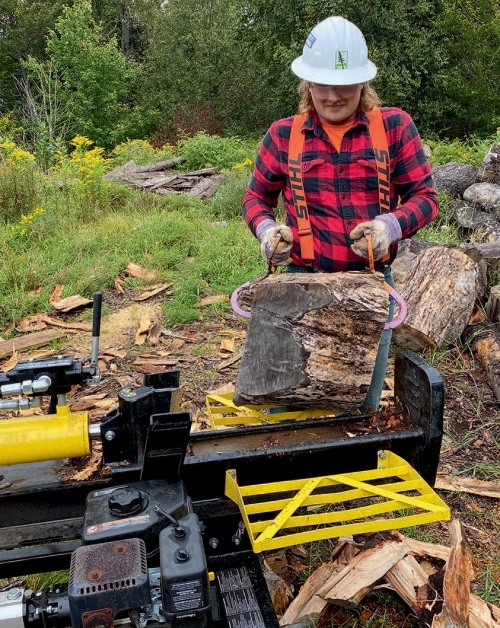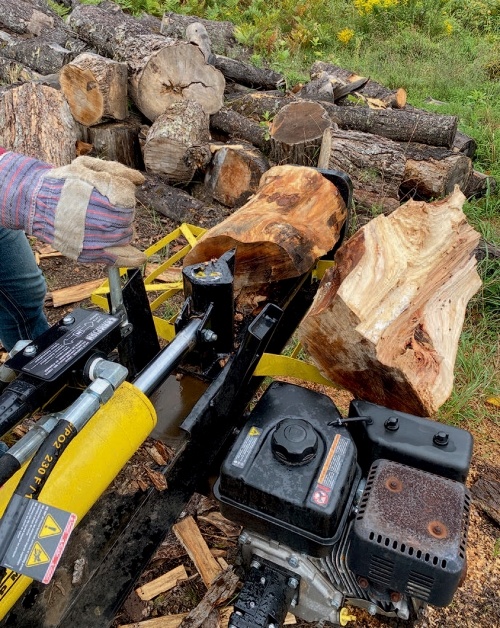In the last column we discussed tips and tricks for hand splitting gnarly firewood. Hand splitting is cheaper than a gym membership but may not be practical based on the type or amount of wood you need to split each season. A hydraulic wood splitter can add efficiency, especially if you employ a few helpful techniques.
Split Green Wood
When time allows, process your freshly felled wood right away. It will dry faster than if your rounds are left whole. Splitting green wood also reduces wear and tear on your splitter, because it requires less hydraulic force than splitting bone-dry wood. Additionally, the wood will have fewer splinters if it’s split green, making it easier to handle.
Slab the Big Boys
In our house, the largest, gnarliest rounds are known as Big Boys. Even powerful splitters can fail to cut through these large, knotty pieces. Instead of attempting to split the round through the middle, place the log off-center so that you can slab the outside of the log, then work your way toward the center.
Point Knots Upward
If a knot appears on one side of a log that you’re trying to split, place the knot in the upward position. On a larger log this will allow the splitter wedge to enter below the knot. Entering knots directly in line with the wedge can lead to bent hydraulic rams and other damage to your splitter. (Images 1 & 2)
Use Pulp Hooks
Using pulp hooks extends your reach and allows you to pick up larger logs. You can also detach split pieces from a pulp hook once you develop the “firewood flick,” a method in which you bring the pulp hook to a sudden stop during the throwing motion to break the firewood from the pulp hook. (Image 3)
Efficient Orientation
Most stand-alone hydraulic wood splitters can be used in either a vertical or horizontal orientation. Consider which orientation makes the most sense for the wood. Use vertical splitting when the log rounds are too big to lift; you can simply roll them into position. When you’re working with a hydraulic splitter in the horizontal position, you can gain efficiency by adding log catchers on the sides to prevent logs and split wood from falling to the ground. (Image 4)
Consider a Dual-Action Splitter
Most hydraulic wood splitters are single-action, meaning they only split in one direction. This necessitates retracting the hydraulic ram on each pass. A dual-action or double-stroke wood splitter has a two-sided wedge that splits in both directions.
In other words, the wedge passes through the log in one direction, and after the operator replaces or repositions the log, the wedge reverses along its track to make another cut. This effectively doubles the speed of your wood-splitting operation.





